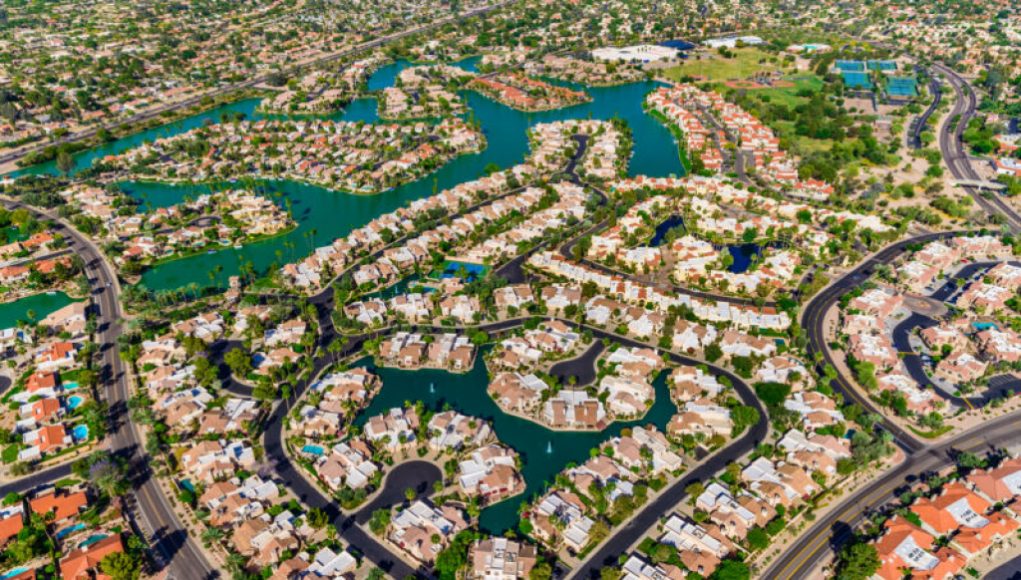The news is in: Phoenix, Arizona is officially out of groundwater. Governor Katie Hobbs made the announcement on Thursday, adding to the state’s already long list of water problems. According to a new groundwater model released by the Arizona Department of Water Resources, the Phoenix metro area will be short nearly 5 million acre feet of water by 2121. That’s enough water for around 17 million homes!
This means that any new development in the region that hasn’t secured its water supply will have to rely on other sources, such as the Colorado River or recycled wastewater. Since 1957, Arizona’s population has grown a whopping 555%, while water usage has decreased by only 3%. Much of the state’s growth has come from sprawling suburbs built on cheap desert land, which rely solely on groundwater.
Sarah Porter, director of Arizona State University’s Kyl Center for Water Policy, says that developers will now have to weigh the cost of building on more expensive land with an assured water supply or finding new water sources on land that can no longer rely on groundwater. State officials are quick to point out that the model shows the state’s groundwater laws are working and that Arizona’s water supply is secure. However, the impact will largely be felt in certain areas of the region.
When Arizona passed its Groundwater Management Act in 1980, the state decided to keep track of groundwater in the most populated parts of the state. With the modeling showing that the Phoenix metro area is not adequately replenishing the groundwater it’s taking out of its aquifer, the state is putting a stop to growth on that finite resource. “The regulations are working to prevent homes from being sold and then having no water,” says Porter.
Arizona is responding to its severely limited water supply by imposing a stringent new housing policy until at least 2026which prohibits landowners from building new housing, without groundwater credits.
The unprecedented policy was passed by the Arizona Department of Water Resources (ADWR) on June 18, 2021, and will limit new residential, commercial, and industrial development in the state for at least the next five years. All of the state’s new developments must be built with groundwater credits, which the ADWR defines as “a source of water supplied for the purpose of providing a secure, reliable, and long‐term water supply” for the development.
This new policy is a critical response to the intense drought that the state is currently enduring. Arizona is facing an irreversible water supply shortage this summer, due to diminishing aquifers, dwindling rivers, and snowpack that are at 25-year lows. The water scarcity in the state has only worsened since 2017.
Landowners who wish to develop their property must apply for a groundwater credit and prove that the development is feasible without negatively impacting the region’s groundwater supply. Upon approval, the property owner will be granted a short-term credit that can be used to develop the land, but eventually, they must give the credit back and only a fraction of the credits will be eligible for permanent use.
The policy also calls for more stringent regulations over existing developments in the state. All residents in Arizona are subject to an opt-in program that investigates their current water consumption, their projection of future water needs, and the viability of other potential water sources in the development. Projects such as xeriscaping and grey water systems must be adopted by all developments if they are to receive a groundwater credit.
The ADWR policy is an unprecedented step that is aiming to ensure that the next five years of water preservation in Arizona are successful and efficient. As water conservation is always essential, this policy only makes sense, as it protects the state’s already limited groundwater supply. With that in mind, we can only hope that the policy will be effective in protecting our water resources.




















